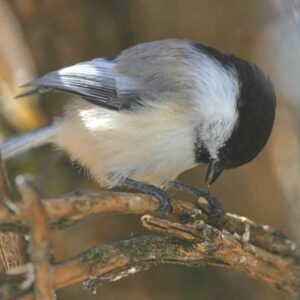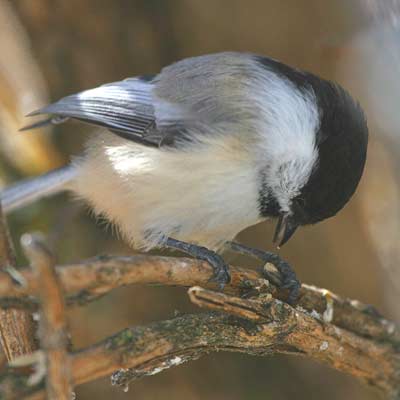 Chickadees are a common sight in southwest Ohio, and for good reason. These small, friendly birds are a joy to watch, and they bring a touch of nature to even the most urbanized landscapes.
Chickadees are a common sight in southwest Ohio, and for good reason. These small, friendly birds are a joy to watch, and they bring a touch of nature to even the most urbanized landscapes.
There are two species of chickadees that can be found in southwest Ohio: the black-capped chickadee and the Carolina chickadee. Both species are about the same size, with a length of 4.7 to 5.9 inches and a weight of 0.3 to 0.5 ounces. They are also both black and white, with a black cap and bib, a white face, and a grayish-brown back. However, there are a few key differences between the two species.
The black-capped chickadee has a black throat, while the Carolina chickadee has a white throat. The black-capped chickadee also has a more northern range, while the Carolina chickadee is found in the southern and eastern United States.
Both black-capped and Carolina chickadees are cavity nesters. They will typically build their nests in old woodpecker holes, but they will also use nest boxes and other cavities. The female lays 5 to 12 eggs, which hatch after about 12 days. The young birds fledge after about 16 days.
Chickadees are omnivores, and their diet consists of a variety of insects, seeds, and berries. They are also known to eat suet, which is a high-energy food that is often offered at bird feeders.
Chickadees are very social birds, and they often travel in flocks. They are also very vocal, and they have a variety of calls that they use to communicate with each other. One of their most famous calls is the “chickadee-dee-dee” call, which is how they get their name.
Chickadees are an important part of the ecosystem, and they help to control insect populations. They are also a joy to watch, and they bring a touch of nature to even the most urbanized landscapes. If you live in southwest Ohio, you are sure to see chickadees in your backyard or at your local park.
Here are some tips for attracting chickadees to your backyard:
- Offer a variety of food sources, including suet, seeds, and berries.
- Provide a water source, such as a birdbath or a water fountain.
- Plant native trees and shrubs that provide food and shelter for chickadees.
- Avoid using pesticides, which can harm chickadees and other wildlife.
By following these tips, you can help to create a backyard that is welcoming to chickadees and other birds.
